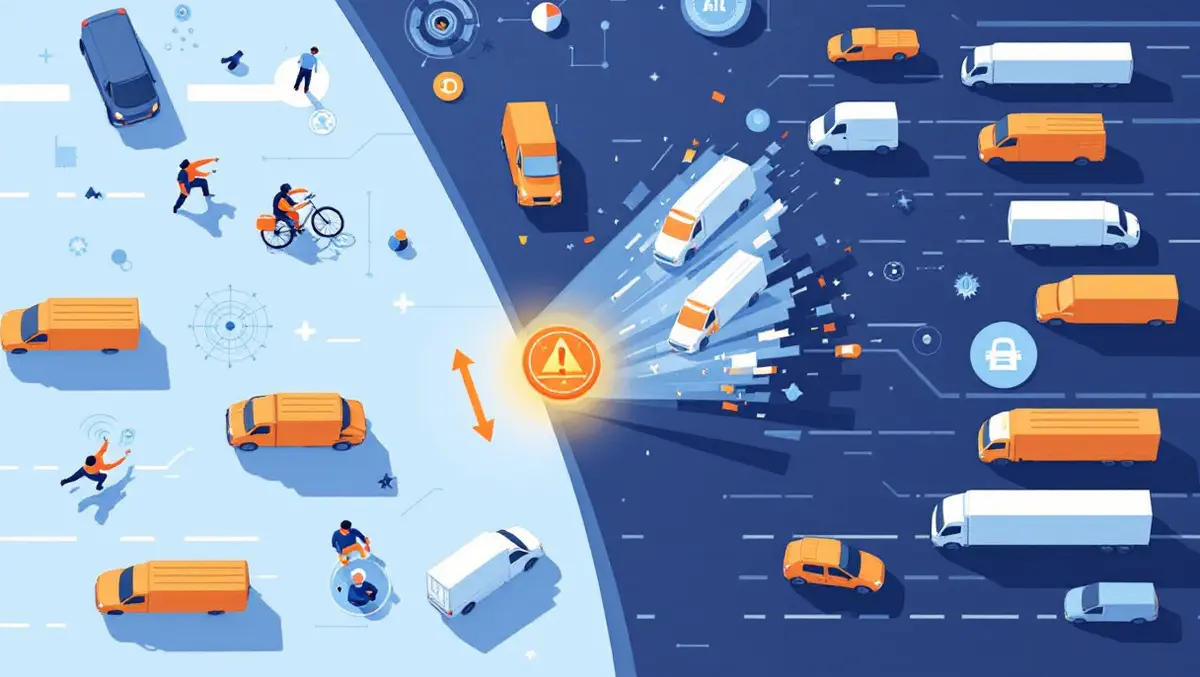
Fleet safety overlooked as AI adoption lags among HSE leaders
New research from Netradyne highlights a significant disparity between the prioritisation of fleet and driver safety among health, safety, and environment (HSE) leaders and the adoption of AI-powered safety technologies.
The survey, which included 114 HSE and operational decision-makers, found that 84% consider fleet and driver safety a high or very high organisational priority. Despite this, 60% of those surveyed acknowledge they have yet to implement any formal fleet safety technologies or policies.
The research points to a reliance on older tools and methods, as 29% of respondents report using GPS tracking and conventional video-recording dashcams. Additionally, 27% depend on transport partners for safety management, often resulting in limited visibility and oversight of driver safety. Only 25% have directly adopted AI-powered fleet safety tools.
Durgadutt Nedungadi, Senior Vice-President for EMEA and APAC at Netradyne, commented on the potential risks of this technological gap: "This technology gap is not just a safety issue, it's a business risk. Fleet incidents impact insurance premiums, compliance exposure, brand trust and delivery performance. By digitising fleet operations, companies can protect people, reduce risk, and build a culture of proactive safety."
While AI and automation are beginning to reshape the responsibilities of HSE professionals, a notable lag remains in extending these advances to fleet operations. Over 70% of survey respondents believe that the digitalisation of HSE functions—particularly through predictive analytics, real-time risk management, and AI-driven insights—will fundamentally change their roles. However, 36% are still in the early phases of digitalising their HSE functions, and just 20% report being highly digitised by employing tools such as AI and automation.
Traditional methods continue to dominate fleet safety practices, with GPS tracking frequently cited as a mainstay. Safety oversight often remains outsourced to transport partners, leaving companies with limited access to real-time safety data. Among the respondents, 80% said that GPS location and arrival timelines are the only metrics they receive from transport partners, while only 14% benefit from real-time alerts and video footage.
Monitoring of key safety concerns, such as driver fatigue, is still underutilised. Only a quarter of organisations reported that they actively monitor driver fatigue, despite its recognised status as a leading cause of road accidents. Many organisations also lack real-time systems to detect risky driving behaviours or to confirm compliance with transport regulations, highlighting a missed opportunity to prevent incidents before they occur.
The research suggests that not leveraging real-time driver behaviour data can lead to significant consequences, including injuries, supply chain disruptions, increased insurance claims, and risks to sustainability efforts and environmental, social, and governance (ESG) goals.
Notwithstanding the current low adoption rates, confidence in AI-driven solutions is growing among businesses. According to the survey, 45% plan to implement AI and automation shortly. Among those who have already adopted such technologies, 48% report accelerated response times to incidents, 45% observe improved compliance reporting, and 40% note enhancements in driver behaviour.
The use of AI is also linked to improvements in driver wellbeing and engagement. The research found that nearly 40% of respondents list driver engagement and welfare as primary motivators for prioritising fleet safety. Additionally, almost 20% of organisations now reward positive driving behaviours, indicating a shift towards using AI not only for risk mitigation but also for fostering a safer and more supportive work environment.
Netradyne's product, Driver•i, uses vision-based technology to transform real-time data into actionable insights. The system supports companies in reducing risky driving behaviours, maintaining compliance, and facilitating driver coaching, reflecting a wider shift in transportation HSE from reactive to predictive safety strategies.
Nedungadi emphasised the importance of aligning fleet safety with the broader digital transformation of the workplace: "HSE leaders are embracing digital tools, but when it comes to fleet safety, a dangerous gap remains. Vision-based AI offers the visibility and control organisations need to meet rising safety expectations and lead with care."
The survey was conducted in Birmingham among HSE and operational professionals, examining the adoption and impact of digital and AI technologies in fleet safety.


